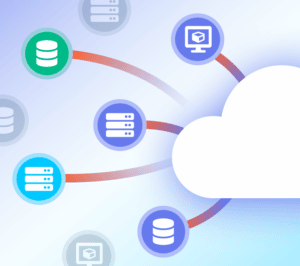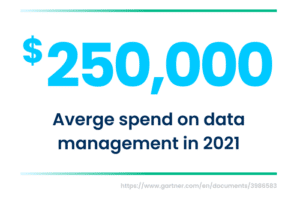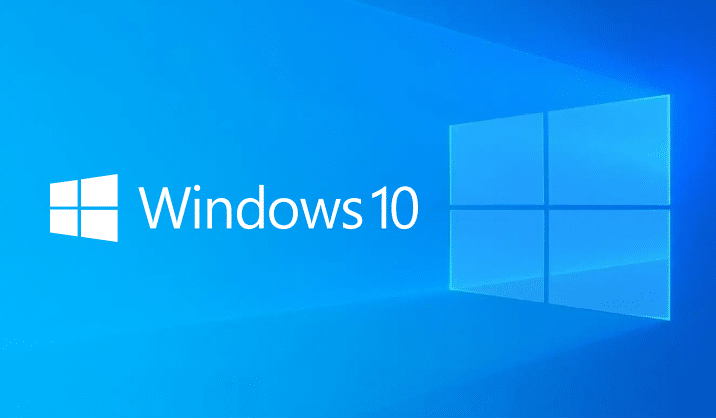 To make data usable, you need data management. While some think of data management simply moving your data into a cloud or a data lake, it’s much more than this. True data management should focus on making data informative by correlating and integrating data from multiple disparate sources and systems across your organization, adding third-party sources and transactional data created in daily operations.
To make data usable, you need data management. While some think of data management simply moving your data into a cloud or a data lake, it’s much more than this. True data management should focus on making data informative by correlating and integrating data from multiple disparate sources and systems across your organization, adding third-party sources and transactional data created in daily operations.
Data management should also include:
- Cleansing the data to reduce errors
- Normalizing it so that aggregated information may be used for reporting, analytics, and better decision-making
- Governance for compliance with regulated industry and data privacy laws, and to ensure authorized access
- An audit trail of changes made to the data and which systems are using it
Cost Concerns
It’s a big job, so it’s no surprise that enterprise-sized companies often have a financial advantage over the mid-market when it comes to data management. That’s because while enterprises likely have in-house teams with the necessary data management skillsets, it’s cost-prohibitive for most mid-market companies to invest in the technical talent needed for data engineering and management. Most mid-market companies do not have the data engineering expertise needed to use data management tools and technologies within their in-house IT team, or their IT team is too busy vigilantly keeping systems stable and secure—which should be IT’s primary and full-time focus.
Nearly half of IT professionals believe that data management is a significant barrier to digital transformation because digital processes and technologies such as the cloud are rapidly evolving and increasingly sophisticated. McKinsey & Company points out that the COVID-19 pandemic significantly accelerated these trends. This means successful data integration and management requires advanced data experts whose job is to stay current on quickly evolving data management technologies, which can be challenging for the mid-market to acquire. And even if you can find this talent, it often does not make financial sense for the mid-market to hire FTEs to obtain the skillsets needed for success.
Heavy Investment
 Nevertheless, finding an effective way to integrate data management is non-negotiable for organizations of any size. Our modern way of doing business includes multiple decentralized data sources and applications, often chosen by separate business units for what works best in their daily operations. This means that in order to get a complete picture of your business, data from multiple cloud sources, on premise sources and third party sources needs to be integrated to keep corporate information consistent across the organization and ensure that decision-making is based on an accurate complete picture of the business. Insights for Professionals found that in 2022, 62 percent of senior IT leaders and company executives surveyed plan to invest in data management, with three-quarters honing in on digital technology and data integration. Gartner reported that in 2021, each company’s average spend on data management tools was close to $250,000. Insights for Professionals results show that in 2022, 30% of IT experts intend to invest up to $500,000 on data management, with around one-quarter planning to spend even more.
Nevertheless, finding an effective way to integrate data management is non-negotiable for organizations of any size. Our modern way of doing business includes multiple decentralized data sources and applications, often chosen by separate business units for what works best in their daily operations. This means that in order to get a complete picture of your business, data from multiple cloud sources, on premise sources and third party sources needs to be integrated to keep corporate information consistent across the organization and ensure that decision-making is based on an accurate complete picture of the business. Insights for Professionals found that in 2022, 62 percent of senior IT leaders and company executives surveyed plan to invest in data management, with three-quarters honing in on digital technology and data integration. Gartner reported that in 2021, each company’s average spend on data management tools was close to $250,000. Insights for Professionals results show that in 2022, 30% of IT experts intend to invest up to $500,000 on data management, with around one-quarter planning to spend even more.
Looking ahead to 2024, Gartner also reports that cloud-native platforms will serve as the foundation for more than 75 percent of new digital workloads. This statistic is particularly meaningful for mid-market companies, where end-to-end solutions become a lifeline to leverage cloud technology efficiencies and advancements without the need for hiring in-house expert skill sets. The right end-to-end solution for the mid-market pairs the right combination of tools and technologies with access to the expert talent needed to achieve value and success. The right end to end solution includes everything so that mid-market companies need not spend years trying to piece together a solution out of countless possible tools and technologies. Building it just takes too much time and resources away from the primary business of most mid-market companies—and the mid-market does not have time to wait for this and thrive against competitive pressure from large enterprises.
By 2024, Gartner predicts that three quarters of organizations will have deployed multiple data hubs to drive data and analytics, since companies should only make decisions based on a complete picture of their data. But for mid-market companies with affordability concerns, few solutions meet the need for data management technology that enables companywide data integration as well as third-party data.
Solutions for the Mid-Market
 Since mid-market firms that want to stay competitive can’t afford to fall behind enterprise-sized companies when it comes to data management, what can they do? Mid-market companies need technical experts to help build solutions, and research shows these solutions will be cloud-based. Insights for Professionals found that in 2022, close to two-thirds (63 percent) of senior IT leaders and company executives surveyed expect to invest in cloud infrastructure as a service. It makes sense over trying to maintain servers on-premise, recognizing that on-premise solutions have morphed into dinosaurs. According to Gartner, 85 percent of companies will have moved to a cloud-first approach by 2025.
Since mid-market firms that want to stay competitive can’t afford to fall behind enterprise-sized companies when it comes to data management, what can they do? Mid-market companies need technical experts to help build solutions, and research shows these solutions will be cloud-based. Insights for Professionals found that in 2022, close to two-thirds (63 percent) of senior IT leaders and company executives surveyed expect to invest in cloud infrastructure as a service. It makes sense over trying to maintain servers on-premise, recognizing that on-premise solutions have morphed into dinosaurs. According to Gartner, 85 percent of companies will have moved to a cloud-first approach by 2025.
Yet most hyper-scaler cloud service providers are priced for large enterprises, particularly to get the level of help that mid-market companies require. What’s more, many enterprise hyperscalers don’t offer data management, since their services focus only on migrating data to third-party cloud vendor platforms. Mid-market businesses need a hyperscaler capable of providing data management within a mid-market budget.
To ensure that important business decisions are not made based on inaccurate information, the mid-market needs an affordable data-cleansing solution.
Ideally, this means that data management would transform the data into decision-ready, analytics-ready status, including transactional data that sheds light on operations and customer behaviors. Gartner predicts that through 2024, half of organizations will adopt modern data quality solutions to better support digital business initiatives. To keep from falling behind, the mid-market must follow suit.
The Key to Consistency
In order to keep data consistent across the organization, another solution for the mid-market is to adopt master data management (MDM). MDM helps to ensure that if a customer’s contact information is updated through customer support, for example, then accounting and all other functional business units will receive the updated information. If data is kept in multiple siloes, operational efficiency decreases as employees spend time trying to track down data for reporting, analyzing, and determining which details are correct.
MDM technology has traditionally only been accessible to large enterprises due to its high cost, as most MDM platforms are a huge expense and implementation takes more than a year to achieve. These platforms typically also require highly skilled FTEs to use and maintain, which can be another cost consideration that rules out mid-market companies.
The answer to successful mid-market data management is to establish a side-by-side partnership with a data platform company to gain the benefits of working with experts and gain access to highly skilled technical resources to achieve true business value. By getting this help, you can devote your company’s time, resources, and innovation to your business and focus on what you do best.



